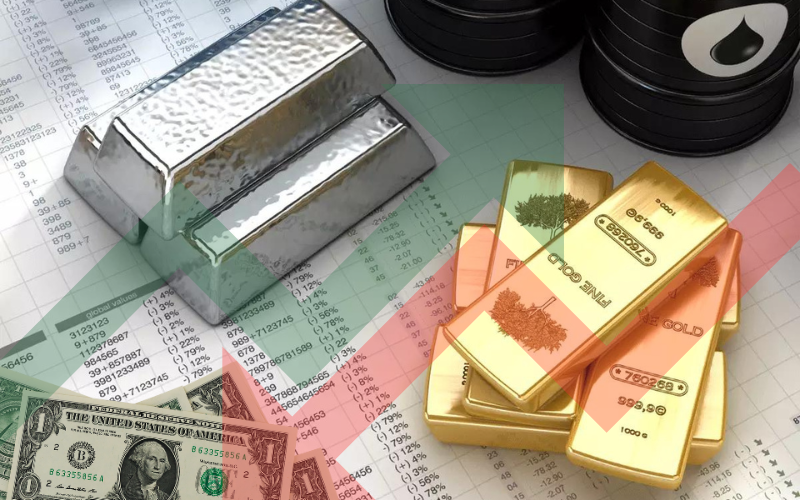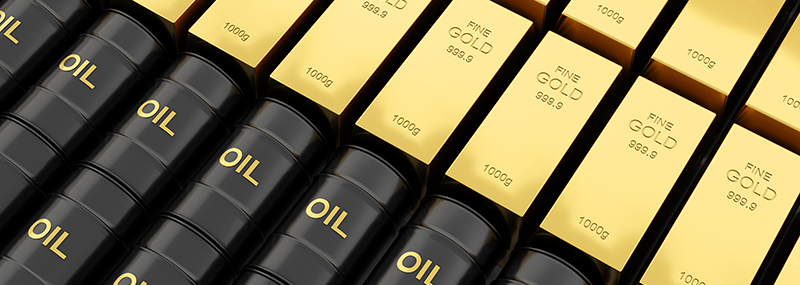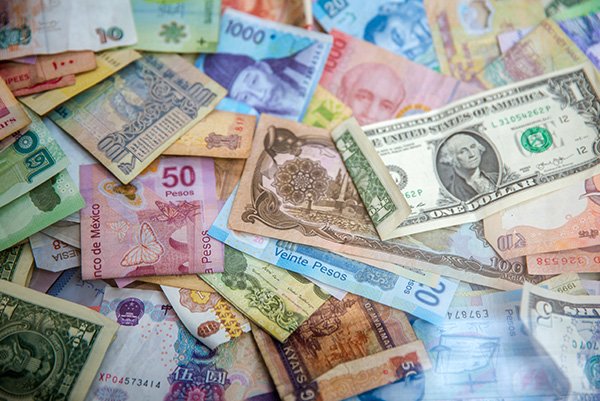AMMAN – Global oil prices fell on Monday due to concerns over anticipated interest rate hikes and the possibility of a supply shortage following OPEC+ coalition’s recent production cuts, according to Bloomberg.
Both Brent and West Texas Intermediate crudes dropped 48 cents on the barrel to USD 81.18 (JOD 57.48) and USD 77.39 (JOD 54.79), respectively.
Meanwhile, gold prices also experienced a decline by USD 0.56 per gram (JOD 0.40) in Jordan, as reported by the General Association for Owners of Jewellery Shops, and globally, as confirmed by goldprice.org.
Overall, this dip in gold and oil prices can be attributed to the fluctuating interest rates, as they can affect oil and gold prices both globally and locally.
In the long run, interest rates influence the US dollar, which in turn affects international crude oil prices.
When the Federal Reserve Board (Fed) adjusts interest rates to stimulate the economy, market expectations for oil demand change, causing crude oil prices to fluctuate.
Additionally, there is a price transmission relationship from interest rates to gold prices.
A reduction in interest rates influences investor expectations regarding the depreciation of the dollar, prompting them to move their capital to the gold market for capital preservation or speculation. The opposite is also true.
As reported by CNBC, the Federal Reserve Board (Fed) is expected to raise interest rates despite the ongoing banking turmoil in the US.
Although the exact increase is not yet clear, it can lead to negative implications for future gold prices, and on the long run, it can also positive implications for future crude oil prices.
In this case, however, the anticipated interest rate hike has led to a paradoxical decline in oil prices, contrary to the usual trend, which may be attributed to a combination of factors that have created uncertainty in the global markets.
Another paradoxical occurrence in this instance is the coinciding decline in the prices of both oil and gold, which has happened only a few times over the last decade or two.
Historically speaking, when the price of gold drops, oil prices increase, and vice versa.
Explaining the paradox
Concerns over higher interest rates may have led investors to re-evaluate their appetite for risk and shift their investments from commodities like oil to safer assets, given the current economic situation.
Such safer assets usually – and historically – almost always include gold, but not this time.
First, there is the issue of opportunity cost, which is the potential gain investors lose (lost revenue) from not choosing the best possible option to invest in, and lower appetite for risk.
When interest rates increase, the yields on other fixed-income assets, other than gold, like bonds and treasury bills become more attractive.
As a result, investors might allocate more of their funds to these safer assets as they offer better returns in a higher interest rate environment, reducing the appeal of gold.
Such assets in which investors may prefer to pump their money into include real estate or stocks.
Additionally, rising interest rates often make gold and oil both more expensive for investors dealing in other currencies, making them both less appealing to invest in.
In the meantime, if investors believe that the anticipated increase in interest rates will not significantly impact economic growth, they may not perceive gold as an attractive investment; and if investors expect central banks to control inflation effectively, the traditional role of gold as a hedge against inflation may diminish.
Nonetheless, even though investors may not deem the economic impact resulting from the anticipated interest rate hike as significant enough to drive investors into the gold market, the fact remains that any slowdown in terms of economic growth could lead to a decrease in oil demand.
As the Fed seeks to strengthen the US dollar, by raising interest rates, oil becomes more expensive, especially for countries settling trade transactions in other currencies, apart from individual and corporate investors, thus potentially reducing demand on oil.
Meanwhile, the ongoing geopolitical tensions in the Middle East, Europe and Asia, and supply chain disruptions might have also contributed to the decline in oil prices, as importers look for more efficient and reliable alternatives.
In this case, the convergence of all of these factors has led to a decline in both oil and gold prices, contrary to historical trends.
What does it all mean?
Given the current economic climate, it is difficult to accurately project future oil and gold prices. However, it is essential to consider the interconnectedness of interest rates, oil prices, and gold prices when making projections.
The changes in oil and gold prices will have varying impacts on countries such as Jordan, Egypt, and the Gulf Cooperation Council (GCC) countries in terms of gold reserves and oil prices.
According to CEIC Data, as of 2023, Jordan’s gold reserves were valued at USD 1.02 billion (JOD 719.46 million). Whereas Egypt’s gold reserves stood at USD 4.58 billion (JOD 3.25 billion), and Saudi Arabia’s at USD 18.86 billion (JOD 13.35 billion).
In the meantime, the United Arab Emirates’ gold reserves were valued at USD 459.5 million (JOD 325.19 million), while Qatar’s gold reserves reached USD 1.56 billion (JOD 1.10 billion) in January 2023, as stated by the Gulf Times.
An increase in interest rates, as anticipated by the Fed, may lead to a decline in the value of gold reserves in these countries.
Based on the recent 2% decrease in gold prices as per goldprice.org, we can estimate the potential loss in value for the gold reserves in these countries at a combined total of approximately USD 529.63 million (JOD 374.79 million), thus far.
As for oil prices, the recent drop in oil prices and the potential influence of rising interest rates on the global economy both pose challenges in estimating the exact cost for the GCC countries.
Recent data from the International Energy Agency (IEA) shows that the GCC countries collectively produce about 18.5 million barrels per day.
Considering the recent 48-cent drop in Brent crude prices, the combined potential loss in revenue for GCC countries, due to this price drop, could very well exceed USD 3.2 billion (JOD 2.29 billion), annually.
Of course, there is always the possibility that oil prices could skyrocket, as a result of the production cuts and the increase in interest rates, on the mid and long ranges, as it usually is the case for oil.
Looking forward
Higher interest rates could boost oil prices, which benefits oil-exporting countries within the GCC, as the US dollar still stands as the primary denomination currency used in the international crude oil market. But fluctuations in dollar exchange rates make it challenging to predict the international purchasing power of oil-importing countries.
In the short term, these countries may worry about the weakening US dollar, but an overestimation of the US dollar can result in a reverse demand shock over the long run.
This can happen when the value of the US dollar becomes overvalued or stronger than other currencies, making international trade in the US Dollar more expensive, and the currency itself less competitive in the global market.
In turn, this could either cause a huge dip in demand for commodities that are traded in the US dollar or push other currencies to replace the US dollar in these transactions.
So far, according to market analysis by CAPEX, gold prices are expected to remain under pressure in the short term due to the anticipated interest rate hikes. But the long-term outlook remains bullish as investors may seek gold as a safe-haven asset amidst potential economic uncertainties, should they persist.
On the other hand, the US Energy Information Administration (EIA) projects that Brent crude oil prices will average USD 73 per barrel (JOD 51.68) in 2023, with West Texas Intermediate (WTI) crude oil prices averaging USD 69 per barrel (JOD 48.87).
As the global economic landscape continues to evolve, understanding the intricate relationships between interest rates, oil and gold prices, and the broader economy will remain critical for informed decision-making and strategic planning in the GCC and the entire Middle East and North Africa Region for both governments and investors alike.



